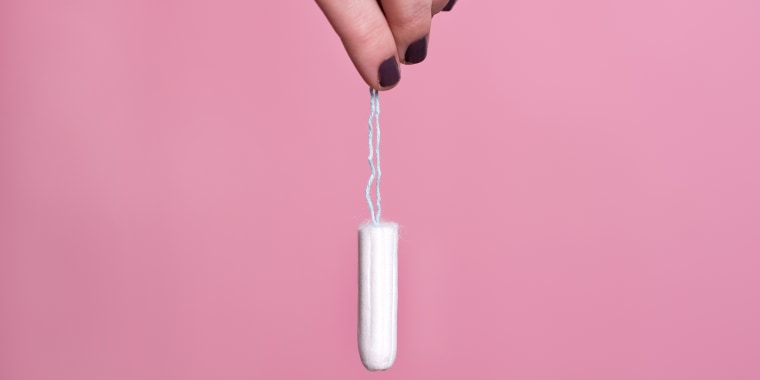Whether you're a tampon novice or a seasoned pro, there are a few things about this popular feminine hygiene product that are just plain confusing. At one point or other, we've all had the same pressing questions about how to find the perfect tampon size, how to master your tampon insertion technique and that age old question: "How long can I keep a tampon in?"
To help break down this "need to know" tampon knowledge, TODAY went straight to the experts who know all there is to know about periods: gynecologists. Their insight on the popular period product will help arm you with everything you could ever need to know about tampons.
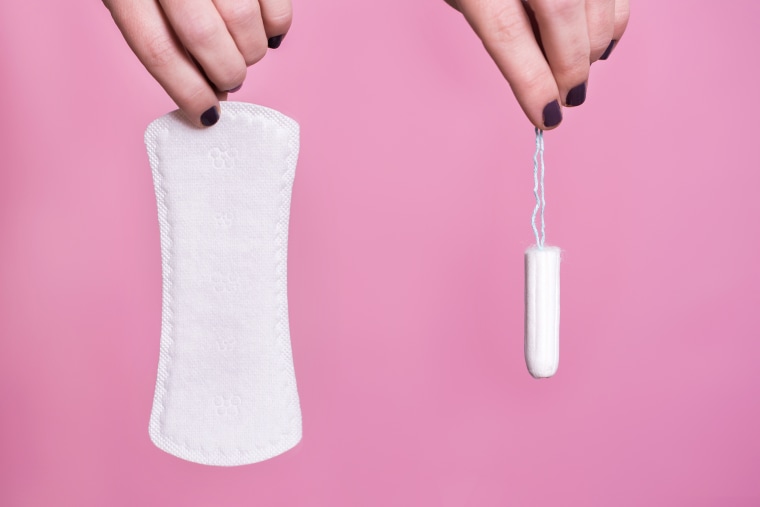
How to choose the right feminine hygiene product
Tampons, pads, Diva Cups, oh my! The sheer number of options for feminine hygiene products is enough to make anyone's head spin. So, how do you select the perfect product to help you make it through your period? It’s all about personal preference.
"The beauty with all of these various products is that they each serve a specific purpose that might be more appealing to one woman over another. Tampons, for example, can be super effective and convenient, but also less messy than a menstrual cup. Menstrual cups, on the other hand, offer an environmentally conscious and more affordable option for the same protection and convenience. In the end, it comes down to which features fit the particular person best," said Dr. Jennifer Conti, an obstetrician-gynecologist at Stanford University and co-host of The V Word Podcast.
The type of period product you use will depend on your activity level, comfort level and the resources around you. Need help figuring out the best one for you? Consider these factors:
- Diva Cups are great if you can't make it to the restroom too often. "Some women prefer the ease and simplicity of tampons, while others like the staying power of menstrual cups which can be changed every 12 hours," said Dr Sherry A. Ross, women’s health expert and author of "she-ology: The Definitive Guide to Women’s Intimate Health. Period." Be sure to consult with your own doctor and consider the risks of toxic shock syndrome.
- Tampons and Diva Cups work well if you're active or an athlete. "Tampons and Diva cups are ideal for swimming, offer overall better protection (less mess) and are more convenient than pads," Natasha said. They're also less evident in athletic wear than a pad.
- Pads are perfect for those really heavy days. "If you are having an especially heavy period with lots of blood clots, a tampon may not be able to collect all the blood, causing embarrassing and disruptive accidents. Pads may be a better option for heavy periods," Dr. Ross said
- Tampons are great if you want to avoid irritation. "Pad use can cause skin changes, chafing and/ or irritation in the genital area due to moisture, which can be avoided with tampons and Diva Cups. Similarly, use of pads may increase the risk of bacterial vaginosis due to the blood causing a change in the delicate vaginal pH balance," said Dr. Sheila Loanzon, obstetrician and gynecologist.

Are there different sizes of tampons?
Tampons are a bit like bras: There are several sizes to choose from, and it can take a bit of trial and error to find the right fit. For starters, tampons typically come in light, regular or super, with the size indicating its level of absorbency. The tampon size you ultimately use will be influenced by your blood flow and also your own personal comfort level.
“The right size tampon is one that absorbs the flow of blood without constant leakage but that you also cannot feel inside. If you're leaking frequently it might be because the tampon is too small, and if you can feel the tampon, it might be because it is too big or not pushed in far enough,” said Dr. Conti.
Also, your flow can vary greatly between the first and last day of your period, but it can also vary throughout the day, so it’s always best to stock your purse with a few tampon sizes, so you’re prepared for any possible leaks!
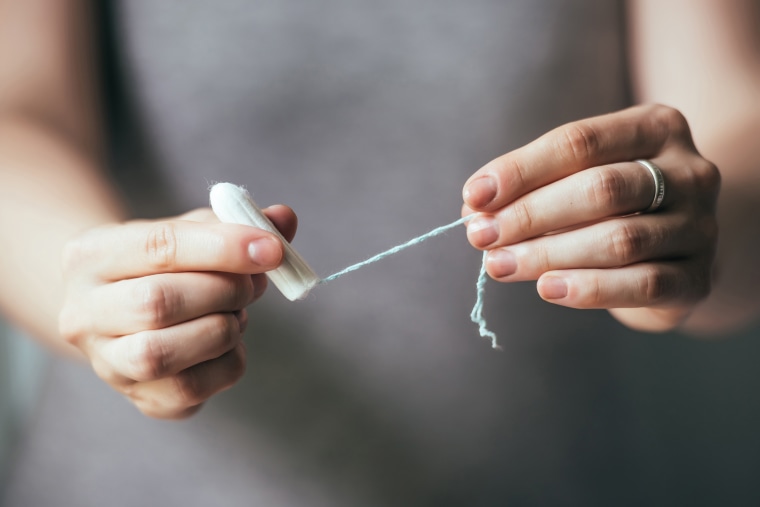
Does a tampon hurt?
“A tampon should never hurt if properly inserted inside the vagina. If the tampon is not inserted deep inside the vagina it can be halfway in and halfway out, causing discomfort, especially at the vaginal opening,” Dr. Ross said. “Another cause of pain is if a super absorbent tampon is used during a lighter flow which can cause pain due to vagina dryness. If your flow is especially light, make sure you use a slender tampon or a pad to avoid this common problem.”
That being said, what if you are using the right size and inserted it properly, but still experience discomfort? Dryness or other issues might be to blame.
“If there is vaginal dryness making it difficult to place the tampon, use of a lubricant may be helpful to slide the tampon in place. If there is pain with tampon placement, I recommend seeing a health care provider to confirm that there is no yeast, bacterial infection, an STD, a previous tampon still inside you, pelvic pain caused by other symptoms like a pelvic infection, or vaginismus/ vulvodynia (vulvar pain of unknown cause),” Loanzon said.
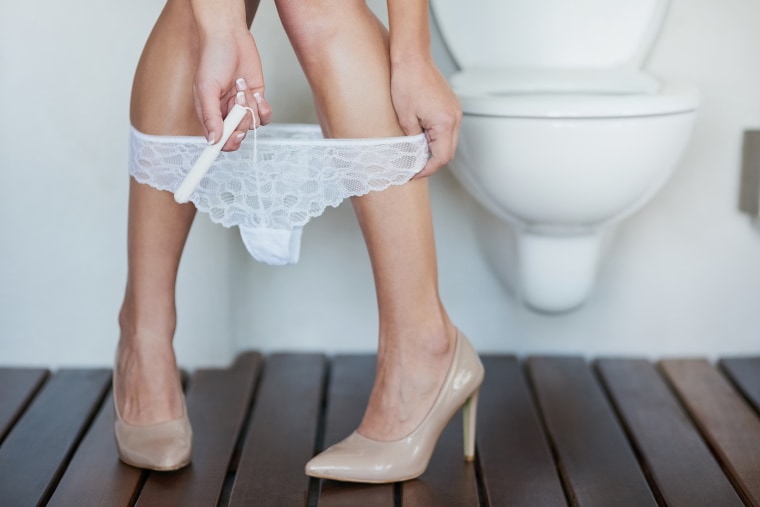
How to put in a tampon
As with most things in life, practice makes perfect. And, even if you consider yourself a seasoned pro, there are a few tricks the pros swear by that can make the process a total breeze:
- For starters, try emptying your bladder before inserting your tampon.
- Make sure to choose the right tampon size! It makes the insertion process so much easier.
- Tackle dryness with lubricant like KY Jelly, Vaseline, Aquaphor ointment or A&D ointment.
- Relax, relax, relax. “Most often, when people have trouble inserting tampons it's not because they are ‘too small’ or because there's anything wrong with their anatomy, but rather because the pelvic floor muscles (that hammock of muscles that sits low in the pelvis and hugs the vagina) are involuntarily contracting,” Dr. Conti said. “A good exercise is to contract your pelvic floor muscles like you would if you were trying to stop the flow of urine (also known as a kegel) and then relax them.”
- Get in the right position. “Many women like to put one foot on top of the toilet when inserting a tampon. This allows the angle of the vagina to be more parallel to the tampon, which makes insertion easier. When inserting a tampon, make sure the applicator is completely flush with the vaginal opening before pushing the cotton piece into the vagina,” Dr. Ross said.
How to take a tampon out
A tampon can get stuck from time to time.
"In my experience, tampons often can become stuck if a woman forgot there was one in place already (busy schedules, intoxication, stress, intercourse caused them to forget, heavy menstrual cycles)," Dr. Loanzon said.
And if a tampon is "lost," you'll know sooner rather than later.
"You may notice a watery-brown discharge with a foul and pungent odor. It’s different than a yeast infection in that you would have itching and a thick, cottage cheese-like vaginal discharge. It’s also different than a bacterial infection in that you may have a yellow or gray vaginal discharge and a fishy odor," Dr. Ross said.
Once you realize you've got a rogue tampon, you should attempt to remove it yourself before panicking.
"Carefully reach up with your fingers and try to pull the string down. If unable, try to grasp the tampon with two fingers and pull down. If still unable, you will need to have the tampon removed by a health care provider," said Dr. Natasha Johnson, Obstetrics and Gynecology, at Brigham and Women’s Hospital.
Depending on the length of time the tampon has been left in place, antibiotics may be given in cases of cervical inflammation, pelvic pain or vaginal odor.
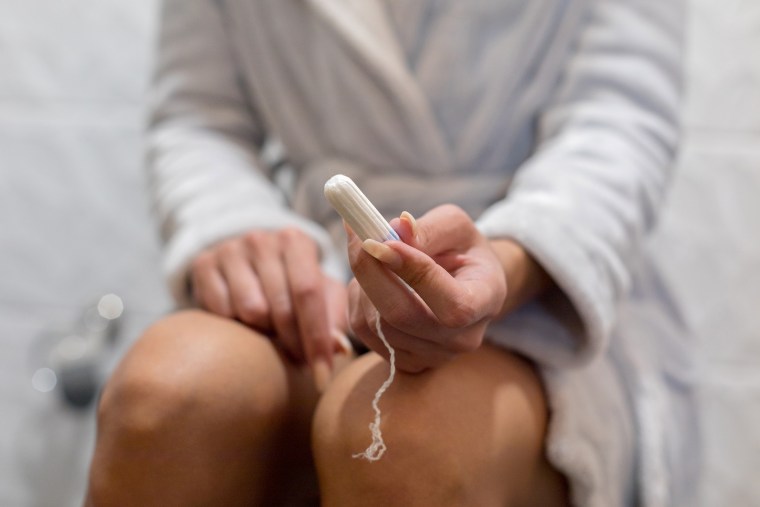
`How long can you leave a tampon in?`
In reality, swap out tampons every four to eight hours.
“Getting in the routine of regularly changing your tampon, regardless of how heavy or light your period blood flow is, is helpful in preventing unwanted odors and infections,” Sherry said.
After eight hours, irritation and infection risk increases, and a super absorbent tampon left in the vagina for too long can be a great breeding ground for certain bacteria.
"Let’s face it, a tampon is a foreign object that stays inside the vagina for an extended period of time. Even though the tampon is a 'sterile' foreign object you still have to be mindful about how long you leave it inside this delicate and sensitive area of the body," Dr. Ross said. "The risk of a vaginal infection or Toxic Shock Syndrome (TSS) will be increased if you don’t follow the basic hygienic rules of tampon use."
Your risk for TSS, a rare complication of a Staph bacterial infection, increases if you leave a tampon in for more than eight hours or a menstrual cup in for longer than 12 hours. Those with compromised immune systems, such as those with HIV or cancer, are also more at risk for TSS.
Symptoms of TSS can occur quickly and without warning, and can vary.
"TSS can start out as a fever, a rash that looks like a 'sunburn' — especially on the hands and feet — vomiting, muscle aches, headaches or diarrhea. TSS symptoms can progress to low blood pressure, ulcerations in mucous membranes such as your eyes, mouth and throat and ultimately cause difficulty breathing and death," Dr. Ross said.
After being diagnosed with TSS, possible treatment options include multiple antibiotics, hospitalization, removal of the offending agent (i.e. tampons) and possible surgical intervention.
The bottom line? TSS is pretty rare, but don't take your chances. Carry an extra tampon on hand and swap it out every eight hours!
Top tampons, pads that the experts love
- U by Kotex Click Compact Tampons, $15, Amazon
These compact tampons are easy to insert and are pretty darn absorbent, too. So, they quickly became a standby for Dr. Ross.
- Tampax Pearl Lite Tampons, $17, Amazon
Dr. Ross loves this tampon that features a LeakGuard braid and a smooth removal layer that offers extra comfort.
- GladRags Pantyliner Plus, $23, Amazon
Looking for an alternative to your average period product? Dr. Conti loves these all-natural, washable pads that are environmentally friendly.
- Seventh Generation Organic Tampons, $5, Amazon
Love all things natural and organic? Dr. Ross adores this organic feminine hygiene option.
- Tampax Pearl Unscented, $9, Amazon
This fave of Dr. Johnson is great for women who don't want all the frills of a scented tampon.
- DivaCup, $30, Amazon
Dr. Johnson recommends this cotton-free alternative to tampons for its low risk of TSS and its environmentally safe design.
- Lunette Reusable Menstrual Cup, $28, Amazon
Dr. Ross swears by this comfy, odorless and eco-friendly option that comes in two reusable sizes.
